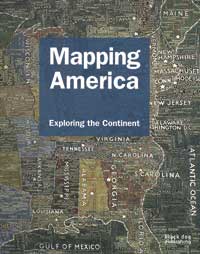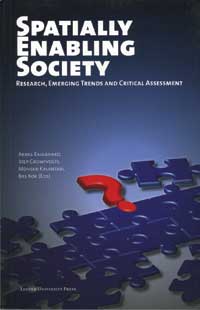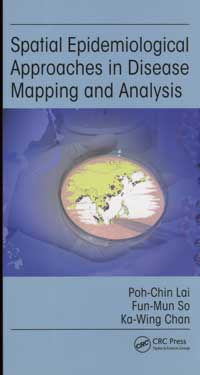ArcUser Online
Summer 2011 Edition
GIS Bookshelf
This article as a PDF.
 Mapping America: Exploring the Continent
Mapping America: Exploring the Continent
By Fritz Kessler
As Frank Jacobs of the popular Strange Maps blog notes in his introduction to Mapping America: Exploring the Continent, "In the five centuries since its discovery, and especially during its exploration, America has served as a giant blank canvas for the imagination." Maps can do many things: in this volume, they tell the story of America's transformation from an obstacle encountered on the way to the riches of the Orient to an opportunity for countries to acquire empires and wealth and for individuals to reinvent themselves. Although the name "America" was originally affixed to an area known today as Paraguay on Martin Waldseemüller's 1507 map, it applies to the landmass that stretches across the western hemisphere from the top of Canada to the tip of South America. However, this volume contains historical, thematic, diagrammatic, and personal maps of the United States of America. They range from John Foster's 1677 woodcut map of New England to Jack Kerouac's map of his travels hitchhiking in the winter of 1947–48. The contributing author, Fritz Kessler, is a professor of geography at Frostburg State University, Maryland; past editor of the journal Cartographic Perspectives; and a contributor to various books related to geography and cartography. While this book is of special interest to cartographers, its diverse and engrossing maps appeal to a broad audience. Black Dog Publishing, 2010, 240 pp., ISBN-13: 978-1907317088
 Spatially Enabling Society: Research, Emerging Trends and Critical Assessment
Spatially Enabling Society: Research, Emerging Trends and Critical Assessment
Editors: Abbas Rajabifard, Joep Crompvoets, Mohsen Kalantari, and Bas Kok
The definition of spatially enabling governments, businesses, and society at large has been evolving. Previously, this meant improving data sharing through interoperability and standards. As the use of spatial technologies has become increasingly incorporated into government and business processes, spatially enabling is a much broader concept. This book is a collection of peer-reviewed articles on spatially enabled societies (SES) that were solicited for the Global Spatial Data Infrastructure Association (GSDI) 12 World Conference. Various aspects of SES, which was the conference theme, are addressed: the evolving concept of SES, regional activities to promote SES, developments (such as volunteered geographic information and automatic spatial metadata enrichment), and practices that will encourage the development of SES. Leuven University Press, 2010, 248 pp., ISBN-13: 978-9058678515
 Spatial Epidemiological Approaches in Disease Mapping and Analysis
Spatial Epidemiological Approaches in Disease Mapping and Analysis
By Poh-Chin Lai, Fun-Mun So, and Ka-Wing Chan
This book differs from others on the application of GIS to epidemiological studies in that it examines the spatial resolution needed to explore the geographic dimension of a public health issue rather than building the inquiry around the scale of the data available. Although public health inquiries can be particularly constrained by the availability of data—especially data aggregated at a suitable level—this commonsense approach is valuable in addressing the demands of working with real-world data to meet contemporary epidemiological research challenges. A team of Hong Kong University geographers wrote this book to satisfy the demand for applied approaches. The examples in the book use data from Thailand and Hong Kong and GIS software in the public domain such as Epi Map (built on Esri technology). Point pattern and areal methods of disease analysis are covered as well as spatial sampling techniques such as kernel density and spatial interpolation methods. Final chapters address setting up a GIS infrastructure and current GIS research. CRC Press, 2008, 194 pp., ISBN-13: 978-1420045468